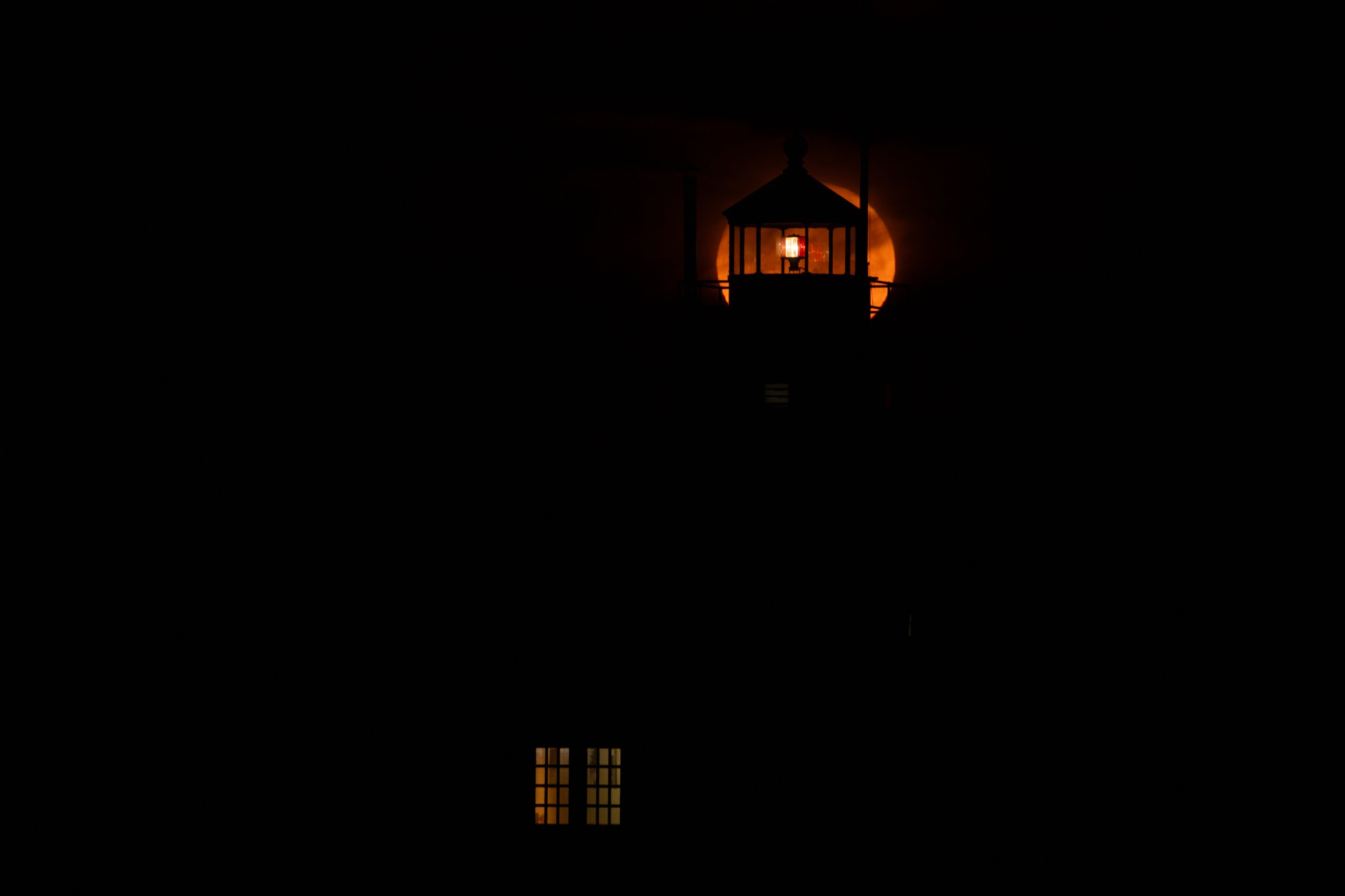Exposure - March 2025
Driving into work, I always caught a brief glimpse of this scene. I wanted to capture it just as the sun rose. It took four different attempts to capture it at the right focal length (70mm) and exposure.
The challenge was to get enough exposure on the streets, without overexposing the lights and the sky. ISO 400 is low enough not to cause too much noise.
1 second exposure, aperture F10, ISO 400, focal length The aperture was enough to get the depth and with 1 sec shutter speed, the camera was on a tripod, delayed shutter release.
Before sunrise, the full moon is still reflecting the light from the sun. Getting just enough exposure to show some of the Lighthouse, as well as the signal light. The moon is in motion, so the shutter speed has to be fast enough to keep it sharp. This being about 40 prior to the sun rising helps with a little ambient light.
1/30 sec shutter speed, F9 aperture and 320 ISO at 350mm focal length, Camera on tripod
The Norther Lights are spectacular and somewhat difficult to photograph. First of all, seeing the lights is exciting and thinking about photography becomes a challenge. The lights change intensity rapidly, so keeping exposure becomes a moving target. It’s important to check the exposure often by reviewing the image on the screen. Longer exposures are needed, but in order to get some details in the lights, it’s better to keep the exposure in the 6 to 8 second range and compensate with higher ISO. Longer shutter speeds will wash out some of the light’s details. In this image, the foreground exposure was enhanced in editing to bring out the inviting details. Down to the beach.
6 second shutter speed, F2.8 aperture and 1600 ISO, 14mm focal length, camera on tripod
The light house is purposely underexposed and I like the way there is a hint of the lighthouse being lit by the moon. With sunrise still an hour and half away, there is very little ambient light for the Lighthouse. I did make some other images with higher ISO to bring a little more detail in the lighthouse, but the balance between bringing out more detail and keeping the moon properly exposed is very tight.
1/4 sec shutter speed, F10 aperture, ISO 320, focal length 500mm, camera on tripod
An example of depth of field. Notice the foreground and background are out of focus while the Snowy Owl and all the corn shucks are in focus across the middle of the picture.
Even though the aperture was F9 and the focal length was 840mm, the depth of field appears small. The actual DOF is about 700 feet. It appears shallow because the shot was made from a very low angle, compressing the appearance of the DOF.
1/2000 sec shutter speed, F9 aperture, 1400 ISO. Handholding at 840mm requires high shutter speeds to ensure focus. With the sun setting, golden hour, the ISO was increased to get proper exposure. Noise was reduced in editing.






